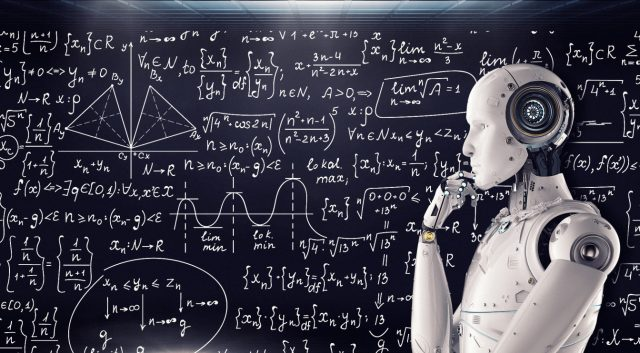In 2022, people benefit from artificial intelligence every day: music recommendation systems, Google Maps, Uber, and many other applications powered by AI. However, confusion remains between Artificial Intelligence, Machine Learning and Deep Learning. One of the popular Google search requests goes like this: "Are artificial intelligence and machine learning the same thing?".
Let's make things clear: Artificial Intelligence (AI), Machine Learning (ML), and Deep Learning (DL) are three different things.
Artificial intelligence is a science like mathematics or biology. It studies ways of building intelligent programs and machines that can creatively solve problems, which have always been considered a human prerogative.
Machine learning is a subset of artificial intelligence (AI) that provides the ability to automatically learn and improve from experience without having to explicitly program a system. In ML, there are various algorithms (such as neural networks) that help to solve problems.
Deep learning, or deep neural learning, is a subset of machine learning that uses neural networks to analyze various factors with a structure similar to the human nervous system.
How can machines learn?
Machine learning is a subset of the larger field of artificial intelligence (AI) that “focuses on teaching computers how to learn without the need to be programmed for specific tasks,” note Sujit Pal and Antonio Gulli in Deep Learning with Keras. “In fact, the key idea behind ML is that it is possible to create algorithms that learn from and make predictions on data.”
Datasets. Machine learning systems are trained on special collections of samples called datasets. The samples can include numbers, images, texts or any other kind of data. It usually takes a lot of time and effort to create a good dataset.
Read More : How Machine Learning AI Is Going To Revolutionise The Gaming Sector Forever.
Features. Features are important pieces of data that work as the key to the solution of the task. They demonstrate to the machine what to pay attention to. How do you select the features? Let’s say, you want to predict the price of an apartment. It is hard to predict by linear regression how much the place can cost based on the combination of its length and width, for example. However, it is much easier to find a correlation between price and the area where the building is located.
Note: It works as above in case of supervised learning (we will talk about supervised and unsupervised ML later on) when you have training data with labeled data, which contain the “right solutions”, and a validation set. During the learning process, the program learns how to get to the “right” solution. And then, the validation set is used to tune hyperparameters to avoid overfitting. However, in unsupervised learning, features are learned with unlabeled input data. You do not tell the machine where to look at, it learns to notice patterns by itself.
Algorithm. It is possible to solve the same task using different algorithms. Depending on the algorithm, the accuracy or speed of getting the results can be different. Sometimes in order to achieve better performance, you combine different algorithms, like in ensemble learning.
Read More : What Is Deep Learning And How Does It Work?
Deep learning
Deep learning is a class of machine learning algorithms inspired by the structure of a human brain. Deep learning algorithms use complex multi-layered neural networks, where the level of abstraction increases gradually by non-linear transformations of input data.
In a neural network, the information is transferred from one layer to another over connecting channels. They are called weighted channels because each of them has a value attached to it. All neurons have a unique number called bias. This bias is added to the weighted sum of inputs reaching the neuron, to which then an activation function is applied. The result of the function determines if the neuron gets activated. Every activated neuron passes on information to the following layers. This continues up to the second last layer. The output layer in an artificial neural network is the last layer that produces outputs for the program.
In order to train such neural networks, a data scientist needs massive amounts of training data. This is due to the fact that a huge number of parameters have to be considered in order for the solution to be accurate.
Deep learning algorithms are quite the hype now, however, there is actually no well-defined threshold between deep and not-so-deep algorithms. However, if you would like to have a deeper understanding of this topic, check out this blog post by Adrian Colyer.









0 Comments